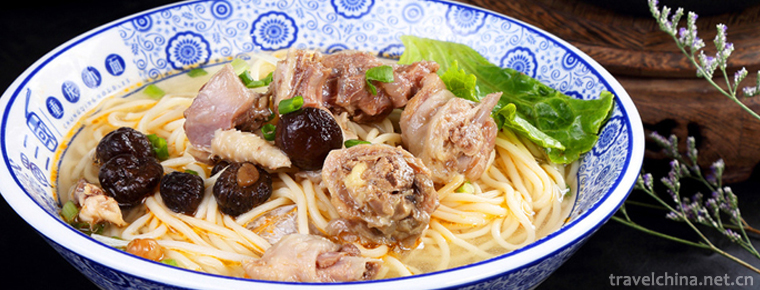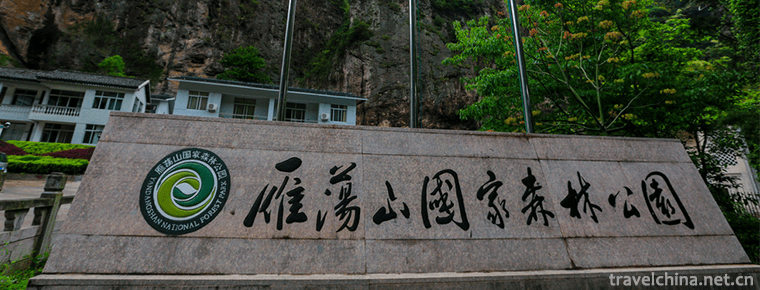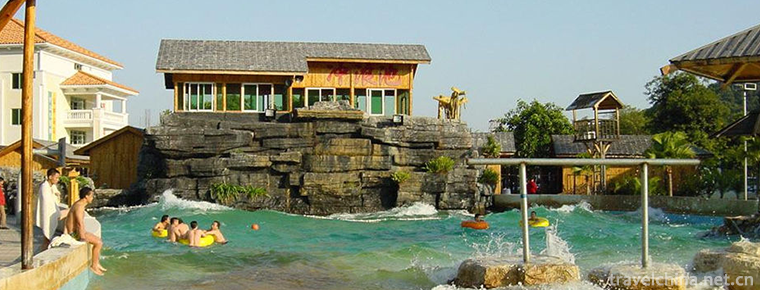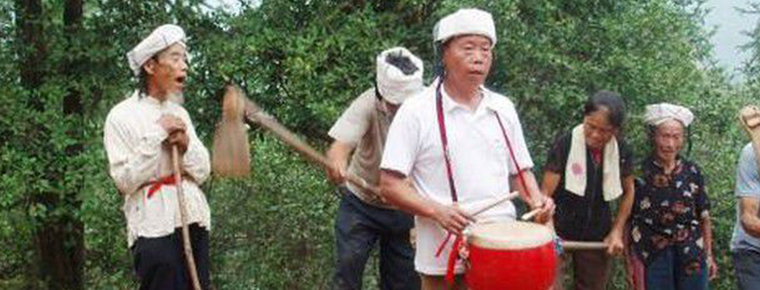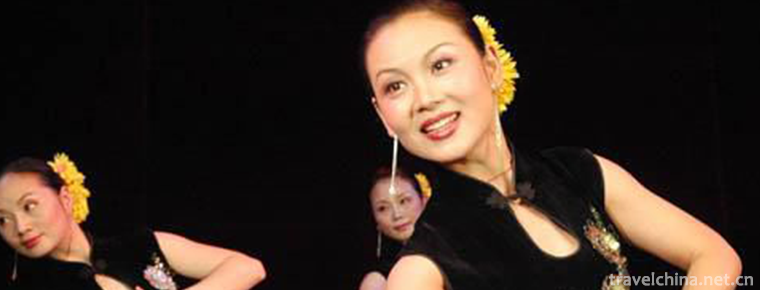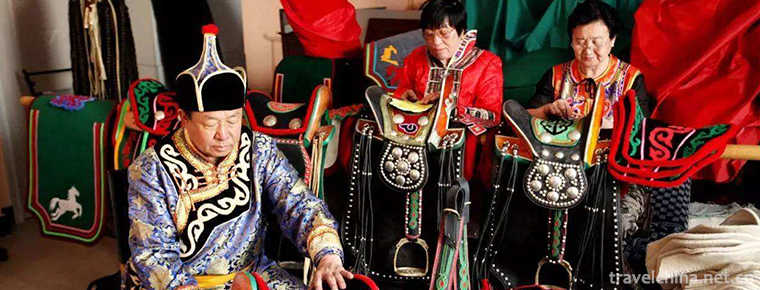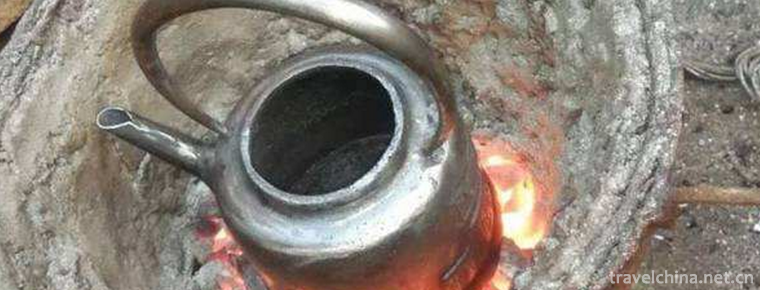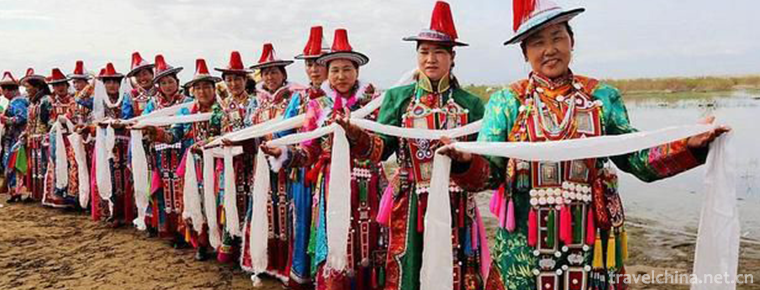Drum dance
Drum dance
Hani rhythm and drum dance is a kind of sacrificial dance of Hani people on the traditional festival "Onmatu". The dance is vigorous and bold, vigorous, simple and free, showing the same personality as the Hani People's Mountain and the same feelings as the forest. The rhythm and drum inspiration originated in the ancient times when the Hani people lived by hunting.
In November 2014, the handcuffs and drums declared by Jianshui County of Yunnan Province were listed in the fourth batch of national intangible cultural heritage list with the approval of the State Council.
historical origin
In order to contact and invite hunters during hunting, people inadvertently found that the hollow trees in the mountains would make a noise, so they cut hollow logs and stretched the cowhide to make drums. In addition to contacting and inviting hunters, drums can also play a role of attracting prey by tapping gently sometimes. If a single person or a small number of people encounter a beast, stormy beating can also play the role of self-defense of the beast running under the mouth.
The simple, deep, dignified, rhythmic and mysterious dance moves the audience's thoughts to the ancient Hani tribe, witnessing the heroic struggle between the Hani ancestors and nature. With the development of society, they imitated the farming action of agricultural production, which made the rhythm inspiration develop abundantly. Especially the discovery and utilization of copper began to have the rhythm inspiration, which became the real rhythm inspiration. Handcuffs represent the fullness of millet and drums represent the abundance of millet grains. Now, handcuffs and drums are the main activities to pray for a full crop, a good harvest of grain or to celebrate festivals and festivals.
Especially the Hani people's traditional ritual of "sacrificing dragons" which prays for good weather and good luck is inseparable from the rhythm and drum. They always carry the rhythm and drum through the whole process. Every festival, Hani set up a rhythm drum farm in the forest, singing a long narrative song of "Haba" in memory of their ancestors'achievements, dancing rough and vigorous, reflecting the ancient social life of the Hani people and the arduous encouragement of digging terraces. When dancing, first of all, the prestigious and respectful elders elected to preside over the opening ceremony, toast on gongs and drums, hold handcuffs around the table three times, salute to the four directions, and then knock the gongs three times to show the beginning. Afterwards, the dancer holds the handcuffed drum, beats and dances, forms a circle, the drum beater is outside, the handcuffer is in the center. When dancing, the center of gravity of the body moves down, the legs continue to flex and stretch, and the body fluctuates up and down. At this time, Hani women are standing hand in hand in two lines, dancing a simple, deep, vigorous, rigid and soft dance. The whole dance is simple and vigorous, deep and powerful, novel in rhythm and enthusiastic and unrestrained, which makes people feel a kind of male masculinity beauty, and vividly reflects the Hani people's strong and simple character and perseverance of the national spirit.
Inheritance significance
Haniduo Drum Encouragement was once praised as "the art of world style". It was praised at the opening and closing ceremonies of the National Minority Sports Games and the Third China Art Festival for its touching power. He won the highest prize in the Chinese Encouragement Competition held in the capital, the Shanhua Prize. The rhythm and drum show the great national character of the Hani people's ancestors, who are persistent, persevering, united and struggling, breaking through all difficulties and dangers, and heading for the ideal goal. The drum dance is one of the important heritage of Hani's ancient culture. It is not only the essence of Hani dance, but also has important value for studying Hani's history and the prosperity of today's national dance art.

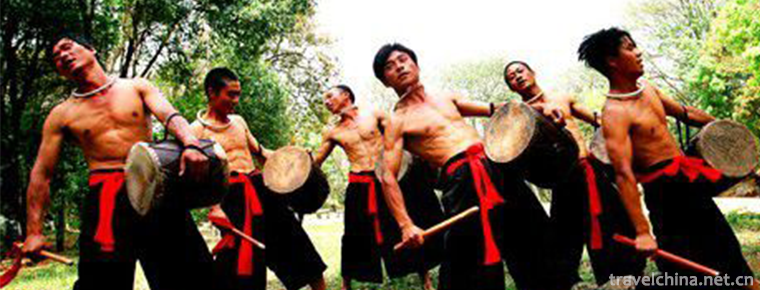
-
Letinous edodes chicken Noodles
Letinous edodes stewed chicken originated in Northern Jiangsu.
Views: 146 Time 2018-10-12 -
Yandang Mountain Scenic Spot
Yandang Mountain, the first batch of national key scenic spots, has the titles of "Sanitary Mountain, Safe Mountain, Civilized Mountain", National Civilized Scenic Spot, National AAAAA Touri.
Views: 190 Time 2018-12-07 -
Huizhou Seaside Hot Spring Resort
Huizhou Coastal Hot Spring is a large-scale comprehensive resort built according to the national standard of "AAAAAA" scenic spots and five-star hotels. It integrates tourism and vacation.
Views: 207 Time 2019-01-19 -
Kaiping Garden
Kaiping Liyuan is located in Bohua Village, Tangkou Town, Kaiping City, Guangdong Province. It is a private garden of Xie Weili, an overseas Chinese traveling to the United States in Tangkou Town.
Views: 130 Time 2019-01-29 -
Li Zhuang ancient town
Lizhuang, an ancient town precipitated by cultural and historical relics, is an ancient town that tells stories and vicissitudes of the Anti-Japanese War. It is an ancient town that reflects Chinese t.
Views: 198 Time 2019-01-29 -
Tea mountain chant
Yao Township Tea Hill Chant - spread in seven townships in Huangxikou area of Chenxi County, it is said that the chant song is sung when digging tea hill. When people dig tea hill.
Views: 154 Time 2019-04-15 -
Changde silk string
Changde Silk String is a traditional local music popular in the Yuanjiang and Lishui areas of Changde, Hunan Province. At the end of Ming Dynasty and the beginning of Qing Dynasty.
Views: 148 Time 2019-04-16 -
Mongolian Horse Tool Making Skills
The Mongolian horse harness making technique is a handicraft in Horqin left-wing Houqi area of Inner Mongolia Autonomous Region. The production technology of horseback is accompanied by the "hors.
Views: 94 Time 2019-06-05 -
Smelting and Casting Techniques of Pig Iron in Yangcheng
Yangcheng pig iron casting technology was invented in the 6th century BC. Yangcheng pig iron smelting and casting technology in the smelting and casting process first crushed the ore, then roasted at .
Views: 103 Time 2019-07-10 -
Jumping vegetables of the Yi nationality
The dance accompaniment of the Yi nationality is "Dance dishes", which means serving dishes by dancing. It is a unique form of serving and the highest etiquette of banquet for Yi people in W.
Views: 148 Time 2019-07-12 -
Yugur Costume
Yugur costume is the traditional costume of Yugur people. Both men and women of Yugur nationality wear long gowns with high collars and large skirts. Men wear red and blue belts with waistknives, sick.
Views: 138 Time 2019-07-16 -
Mineral resources in Suining
The mineral resources with more reserves in Suining City mainly include oil, natural gas, well salt, placer gold, limestone, etc., especially natural gas and brine resources. Suining has developed and utilized 7 kinds of mineral resources, including shale mine.
Views: 194 Time 2020-12-16
